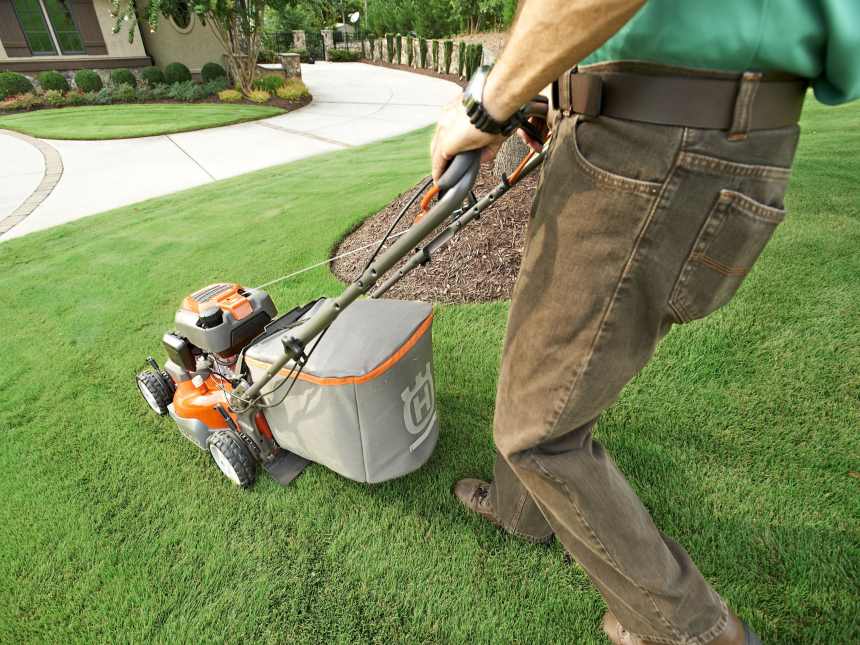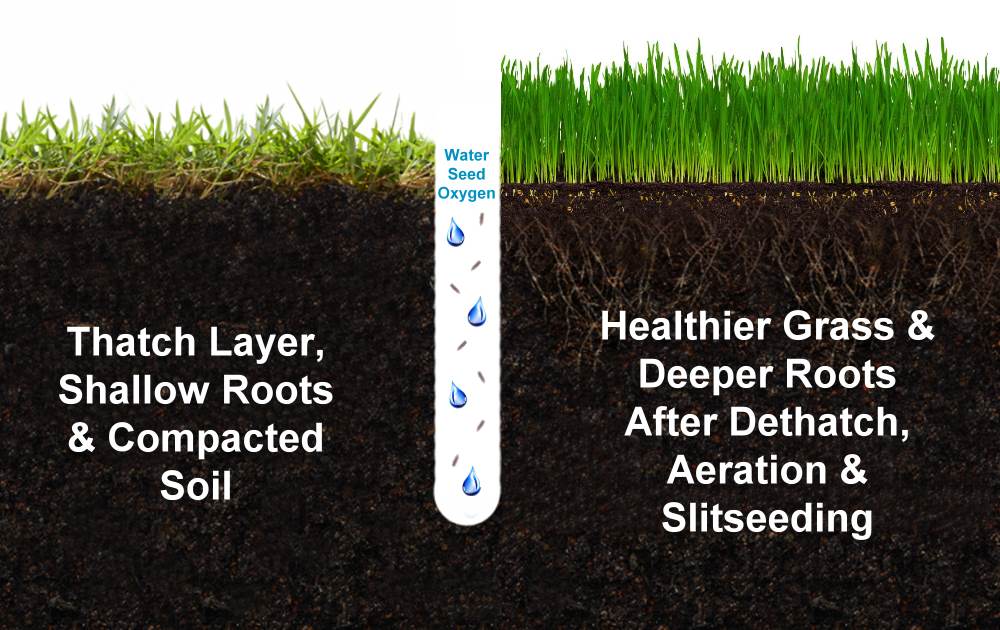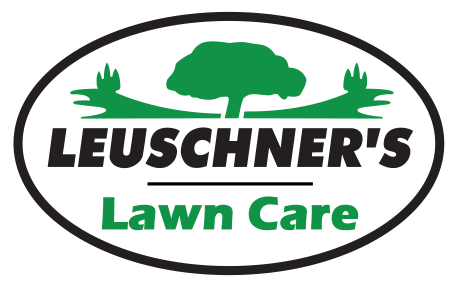Maintenance Tips
Some helpful tips from lawn care professionals …
Practices For A Healthy Lawn
Leuschner’s can provide the additional services and advice needed to help you maintain a healthy lawn. With our decades of experience, we’ve learned a thing or two about lawn care …

De-Thatching & Slit-Seeding
A verti-cutting machine that slices through the soil preparing a void for seed to fall into while at the same time removing excess thatch. Weeds will grow where the grass isn’t. It’s vital that your turf stand is thick and not sparse, so those unwanted weeds are crowded out and cannot penetrate.
Topdressing
Using organic matter (i.e. compost or topsoil) promotes microbial populations as well as improves soil structure.
Mowing
Maintaining turf at a minimum 2 1/2 inches, removing only a third of the leaf blade each time (which simply means mowing high on a regular basis) is one of the most important factors in keeping your grass plants healthy.
Core Aeration
The process of removing small plugs of thatch and soil from the lawn enhances the movement of oxygen, water and nutrients through the root zone, reduces soil compaction and promotes root growth.
Irrigation
Concentrated yet infrequent (3 times per week) for a total of 1 inch of water per week.
Lawn Renovations
We will advise you as to how best prepare your turf …
- The first step to establishing a new lawn is to prepare a good seed bed.
- The use of a total vegetation control may be required to eradicate any existing vegetation (if not) cultivation equipment is used to grind up existing vegetation along with the surface soil.
- Next, we must determine whether or not the existing soil is adequate to sustain the new grass plants or if soil amendments are required.
- If required, soil amendments are added and cultivated into the existing seed bed.
- A final grading process then takes place to prepare the area for seed.
- Finally, specialized equipment is used to plant a certified grass seed mixture that has been recommended for your specific application.
Every effort will be made to ensure you get the best possible result from your seeding project. We use the best equipment and procedures available and we only use “Certified” grass seed. However, there are many other variables that will factor into the success of your grass seed germination. Weather, soil conditions and the availability of moisture are a few of the most important. No guarantee is offered for a specific rate of seed germination following a seeding operation and although not always the rule, it may be necessary to perform further treatments at additional costs to acquire optimum results.
Below are care instructions to follow after a seeding operation has been completed …
- Initial water should be thorough (approx. 1-2 hours)
- Continue watering twice daily (approx. 40-60 minutes per session) for one week, then every other day for an additional two weeks.
- After the 3rd week you can resume a normal watering schedule (2 times per week (for a grand total of 1″ of water per week)
- Resume your normal mowing schedule after the newly seeded areas receive one or two heavy watering sessions.
- Expect germination as follows (after the initial watering); Perennial rye – 7 to 10 days, Fescues and Kentucky Bluegrass – a minimum of 21 days.
- Following germination expect the new grass plants to eventually fill in bare areas as they put out lateral shoot growth.
- A fertilization program and proper mowing procedures, i.e. mowing (2.5″-3″) high on a weekly basis will go a long way to thicken your newly seeded lawn.
Grass seed germination rates …
Every effort will be made to ensure you get the best possible result from your seeding project. We use the best equipment and procedures available and we only use “Certified” grass seed. However, there are many other variables that will factor into the success of your grass seed germination. Weather, soil conditions and the availability of moisture are a few of the most important. No guarantee is offered for a specific rate of seed germination following a seeding operation and although not always the rule, it may be necessary to perform further treatments at additional costs to acquire optimum results.

Tall Grass & Weed Bylaws
Ontario towns and municipalities have Long Grass and Weed By-laws in effect.
The bylaws states that every owner / tenant of a private property in that specific Town or Municipality shall cut the grass and weeds on the premises and remove the cuttings wherever the growth of grass or weeds exceeds the height specified by that Region between specific dates (usually some time in May thru October in each calendar year).
All persons in possession of land, in accordance with the Weed Control Act, Revised Statute of Ontario, 1990, Chapter W.5, Section 3, 16 and 23 must have destroyed noxious weeds growing on their lands within the Municipality throughout the season.
Upon failure to do so, the Town may enter upon the said lands and have the weeds destroyed, charging the costs against the land, as set out in the Act.
Leuschner’s performs grass and weed cutting services for numerous Towns, Municipalities and land owners. We offer services tailored to each organization or individual’s specific requirements to assure bylaw compliance in their area. Please contact us for further information.
Call us today for a free, no obligation quote! You can also request a quote online.

CALL US
Toll-Free: 1-800-417-7309
Local: 905-709-2221
Monday-Friday 9am-5pm
